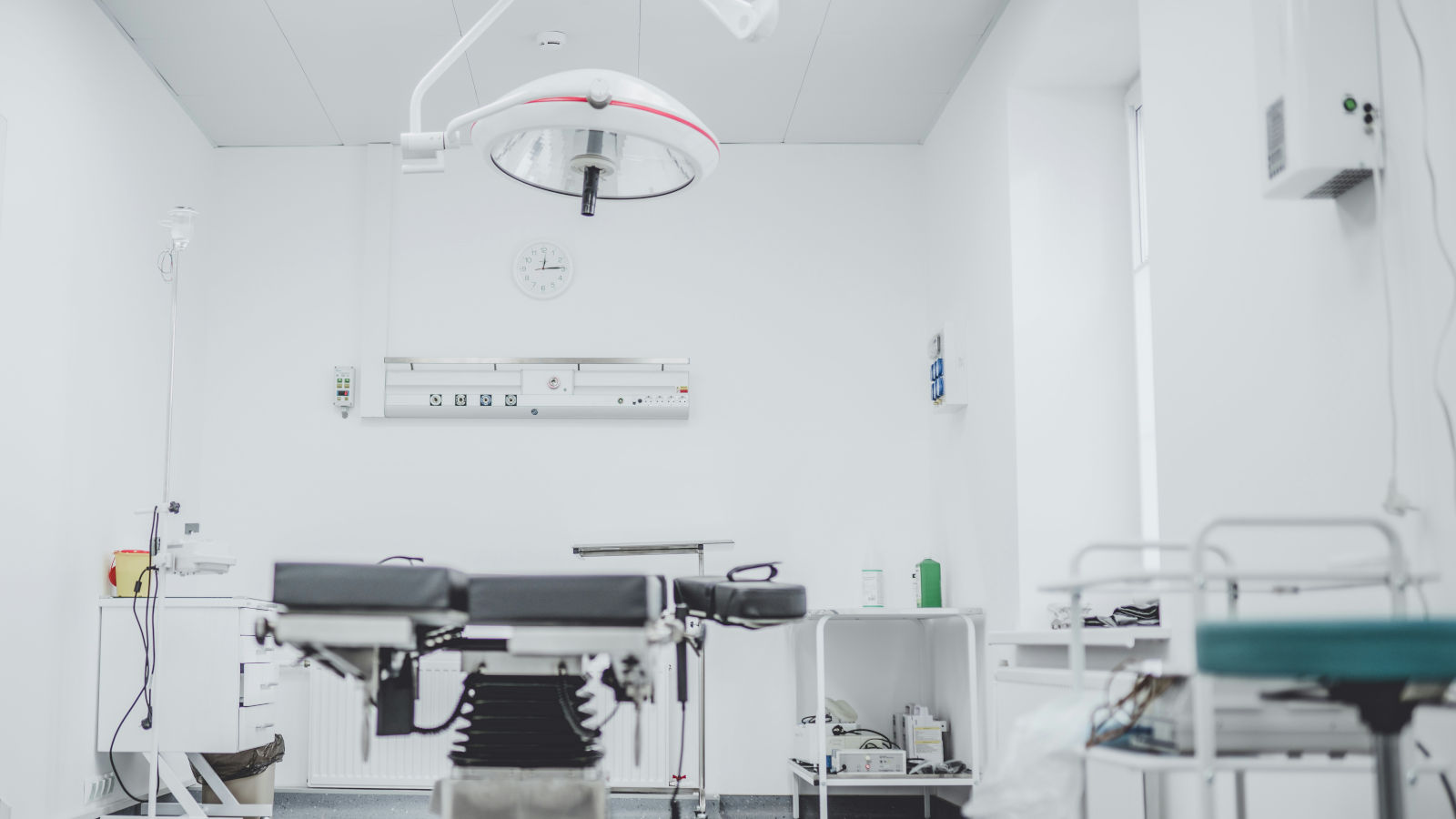
Slovakia has the smallest construction market and the lowest volume of construction investment within the 19 Euroconstruct countries, as measured by gross fixed capital formation for residential and non-residential buildings. The construction industry is supported in its development by Ministry of Defence funds (for dual-use purposes) and resources allocated to hospital construction under the Recovery and Resilience Plan (RRP).
RRP-funded hospital projects lead healthcare modernisation
The RRP is currently financing the construction of two new hospitals in Martin and Banská Bystrica, as well as the reconstruction of two hospitals in Spišská Nová Ves and Poprad. Despite facing challenges such as a shortage of doctors and nurses, as well as high operating costs (including significant hospital debt), it is expected that the new hospitals will improve the quality of healthcare.
Table 1: Overview of hospitals funded by the Recovery and Resilience Plan (RRP)
| Location | Stage | Number of beds | Investment | Start of construction | Completion of construction |
|---|---|---|---|---|---|
| Martin | New construction in progress | 660 | €554 million | 06/2022 | Shell and core: 06/2026 to 12/2028 |
| Banská Bystrica | New construction in progress | 771 | €354 million | 05/2024 | Shell and core: 06/2026 Full fit-out: 12/2028 Hospital premises: end of 2029 |
| Spišská Nová Ves | Reconstruction in progress | 34+121 | €70 million thereof €48 million by RRP | Reconstruction: Summer 2024 New hospital: 4Q2024 | Reconstruction: 06/2026 New hospital Shell and core: 06/2026 Opening: December 2028 |
| Poprad | Reconstruction in progress | 10 x (25-30) | €42,2 million + €4,8 million | During full hospital operation | Geriatric facility: 03/2025 Overall opening: Summer 2026 |
ABOUT THE AUTHOR
Radovan Kostelník
ÚEOS-Komercia
Radovan earned his engineering degree at the Faculty of Civil Engineering of the Slovak University of Technology, where he subsequently pursued doctoral studies. Since 2018, he has worked at ÚEOS-Komercia as an independent expert and technical specialist in research and development. He prepares construction forecasts and cost analyses for residential and non-residential markets. Recently, he has also started providing analyses for the energy sector.
Development of the new university hospital in Martin
The new hospital will include dedicated outpatient, diagnostic and therapeutic departments, as well as separate paediatric and emergency units, the latter of which will include a trauma centre for children and adults. The design of the new St Martin’s University Hospital aligns with the broader strategy of optimising the hospital network.
Construction of the F. D. Roosevelt University Hospital with Polyclinic in Banská Bystrica
The construction of a new infectious diseases building and a new main hospital facility will support the development of the hospital’s core medical programmes. This investment provides an opportunity to reorganise workplaces, focusing on improving efficiency and enhancing both medical and economic rationality, as well as streamlining logistics for patients, staff, and support services. A key element will also be raising social standards and improving comfort for patients and staff. The project is expected to significantly increase operational efficiency. Construction and reconstruction works are scheduled for completion by 30 November 2029.
Reconstruction of the existing building and completion of a new pavilion at Spišská Nová Ves hospital
The hospital project includes the reconstruction of the existing hospital building and the construction of a new pavilion, making it the third largest hospital project under Slovakia’s Recovery and Resilience Plan. The new pavilion will consist of three above-ground floors and one underground level, and will house the gynaecology and obstetrics department, the neonatal intensive care unit, the anaesthesia, and multi-speciality intensive care department, central operating rooms, and central sterilization. The project also relies on the reconstruction of the currently used facility to ensure full functionality. Expansion of the surgical department is anticipated, as is the extension of the hospital’s catchment area to accommodate increased demand for surgical services. The construction and reconstruction are aligned with the hospital network optimization reform.
Comprehensive renovation and reconstruction of Poprad hospital
Poprad Hospital is undergoing a comprehensive renovation and reconstruction, marking the largest overhaul in its history. The modernisation project aims to improve the quality of healthcare, enhance the working environment for staff and reduce the hospital’s energy consumption. The project includes refurbishing the inpatient section, comprising 10 floors with an average of 25–30 beds per floor. The hospital’s internal wiring, heating system, lighting and air conditioning will also be upgraded. The renovation is being carried out while the hospital remains fully operational, with departments and outpatient clinics being relocated according to a phased schedule.
The hospital’s geriatric facility has also been reconstructed and is set to officially reopen in March 2025. Modern spaces for geriatric care have been created to improve comfort and services for elderly patients.
Dual-Use defence resource projects
At the NATO summit held in The Hague on 24-25 June 2025, member states agreed to gradually increase defence spending to 5% of GDP by 2035. Of this, 3.5% is to be allocated strictly for the military, while 1.5% will be directed towards related areas, known as ‘dual-use’ projects.
As part of this approach, a new ‘military’ hospital is under construction in Prešov, with another planned in Bratislava. Additional funding is also being considered for the reconstruction of bridges and roads. Currently, Slovakia has 1,770 bridges on first-class roads, 48% of which are in poor to critical condition. With only around 20 bridges being repaired each year, there is an urgent need to speed up the process. Similar challenges exist on second- and third-class roads, which fall under the jurisdiction of municipalities. The scope and sequencing of the necessary repairs are being evaluated.
Currently, there is insufficient funding to address the backlog of bridge repairs. However, increased defence spending is expected to have a positive impact on the construction sector.
Table 2: Overview of new hospitals with dual-use functions in defence and healthcare
| Location | Stage | Number of beds | Investment | Start of construction | Completion of construction |
|---|---|---|---|---|---|
| Prešov | New construction in progress | 942 | Full fit-out: €550 million thereof construction: €459 million thereof medical equipment: €88 million | 07/2024 | 2027 |
| Bratislava | In planning stage | 1,270 max. 1,467 | Full fit-out: €1,27 billion thereof construction: €900 million thereof medical equipment: €130 million | 09/2025 (planned start of excavation work) | Shell and core: 2027 / 2030 |
Development and modernization of the J. A. Reiman University hospital with Polyclinic in Prešov – New military hospital
A new military hospital is being built on the site of the existing J. A. Reiman University Hospital in Prešov, the third-largest state hospital, which is now administered by the Ministry of Defence. The new facility will strengthen NATO’s eastern flank in terms of medical capacity, reflecting the state’s broader interest in expanding military healthcare. The project involves reallocating funding towards civil-military interface initiatives with dual-use potential, enabling the two sectors to share resources.
Designed to serve both soldiers and the general population, the hospital aims to significantly improve the quality and accessibility of healthcare in eastern Slovakia. Financed from the Ministry of Defence’s budget, the project is expected to create 2,800 jobs. It will provide 1,120 parking spaces and allow bed capacity to be reprofiled up to 1,300.
The new terminal-type medical facility will comprise 11 floors, including three underground levels for technical infrastructure. Construction will proceed while the existing hospital remains fully operational to ensure continuity of care throughout the project.
New M. R. Štefánik National University hospital in the Vajnory district of Bratislava
The original Rázsochy Hospital was planned as a modern university hospital in Bratislava, but construction was delayed for years and ultimately abandoned. Although building began in 1987, the structure was never completed and was demolished in 2019.
Subsequently, a new location was chosen based on accessibility, land ownership, infrastructure, and regional strategy. In April 2025, the Ministry of Health selected a site on the eastern side of Bratislava in the Vajnory district, which was officially approved by the government. The new hospital is a joint project between the Ministry of Health and the Ministry of Defence: The Ministry of Defence will oversee the design and construction, while the Ministry of Health will develop the comprehensive medical plan.
The facility is expected to serve more than 44,000 hospitalized patients annually and will function as a university hospital with integrated education and research. Financing may come from the defence budget.
The hospital’s infrastructure will include both military and civilian components, with part of it located underground. It will be operated by the University Hospital Bratislava and is expected to follow a design model similar to the Prešov military hospital, streamlining the planning process.
ABOUT THE AUTHOR
Radovan Kostelník
ÚEOS-Komercia
Radovan earned his engineering degree at the Faculty of Civil Engineering of the Slovak University of Technology, where he subsequently pursued doctoral studies. Since 2018, he has worked at ÚEOS-Komercia as an independent expert and technical specialist in research and development. He prepares construction forecasts and cost analyses for residential and non-residential markets. Recently, he has also started providing analyses for the energy sector.
